Latest Sheet Music
Cinema Paradiso
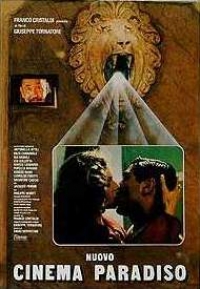
Nuovo Cinema Paradiso (1988) is an Italian film written and directed by Giuseppe Tornatore. It was internationally released as Cinema Paradiso in France, Spain, the UK and the U.S.
It was originally released in Italy at 155 minutes but poor box office performance in its native country led to it being shortened to 123 minutes for international release. It was an instant success. This international version won the Special Jury Prize at the 1989 Cannes Film Festival and the 1989 Best Foreign Language Film Oscar. In 2002, the director's cut 173-minute version was released (known in the U.S. as Cinema Paradiso: The New Version).
It stars Jacques Perrin, Philippe Noiret, Leopoldo Trieste, Marco Leonardi, Agnese Nano and Salvatore Cascio. It was produced by Franco Cristaldi and Giovanna Romagnoli, and the music was by Ennio Morricone along with his son Andrea Morricone.
Told in flashback, it tells the story of the return to his native Sicilian village of a successful film director Salvatore for the funeral of his old friend Alfredo, who was the projectionist at the local "Cinema Paradiso". Ultimately, Alfredo serves as a wise father figure to his young friend who only wishes the best to see him succeed, even if it means breaking his heart in the process.
The film intertwines sentimentality with comedy, and nostalgia with pragmaticism. It explores issues of youth, coming of age, and reflections (in adulthood) about the past. The imagery in each scene can be said to reflect Salvatore's idealised memories about his childhood. Cinema Paradiso is also a celebration of films; as a projectionist, young Salvatore (a.k.a Totò) develops the passion for films that shape his life path in adulthood.
It was originally released in Italy at 155 minutes but poor box office performance in its native country led to it being shortened to 123 minutes for international release. It was an instant success. This international version won the Special Jury Prize at the 1989 Cannes Film Festival and the 1989 Best Foreign Language Film Oscar. In 2002, the director's cut 173-minute version was released (known in the U.S. as Cinema Paradiso: The New Version).
It stars Jacques Perrin, Philippe Noiret, Leopoldo Trieste, Marco Leonardi, Agnese Nano and Salvatore Cascio. It was produced by Franco Cristaldi and Giovanna Romagnoli, and the music was by Ennio Morricone along with his son Andrea Morricone.
Told in flashback, it tells the story of the return to his native Sicilian village of a successful film director Salvatore for the funeral of his old friend Alfredo, who was the projectionist at the local "Cinema Paradiso". Ultimately, Alfredo serves as a wise father figure to his young friend who only wishes the best to see him succeed, even if it means breaking his heart in the process.
The film intertwines sentimentality with comedy, and nostalgia with pragmaticism. It explores issues of youth, coming of age, and reflections (in adulthood) about the past. The imagery in each scene can be said to reflect Salvatore's idealised memories about his childhood. Cinema Paradiso is also a celebration of films; as a projectionist, young Salvatore (a.k.a Totò) develops the passion for films that shape his life path in adulthood.
The Simpsons
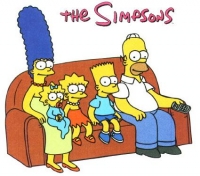
The Simpsons is an American animated sitcom which was created by Matt Groening for the Fox Broadcasting Company. It is a satirical parody of the middle class American lifestyle epitomized by its titular family, which consists of Homer, Marge, Bart, Lisa, and Maggie. The show is set in the fictional town of Springfield, and it lampoons many aspects of the human condition, as well as American culture, society as a whole, and television itself.
The family was conceived by Groening shortly before a pitch for a series of animated shorts with the producer James L. Brooks. Groening created a dysfunctional family and named the characters after members of his own family, substituting Bart for his own name. The shorts became a part of The Tracey Ullman Show on April 19, 1987. After a three-season run, the sketch was developed into a half-hour prime time show and was an early hit for Fox, becoming the first Fox series to land in the Top 30 ratings in a season (1992-1993).
Since its debut on December 17, 1989, the show has broadcast 420 episodes and the twentieth season will commence airing in on September 28, 2008. The Simpsons Movie, a feature-length film, was released in theaters worldwide on July 26 and July 27, 2007, and has grossed approximately US$526.2 million worldwide to date.
The Simpsons has won dozens of awards since it debuted as a series, including 24 Emmy Awards, 26 Annie Awards and a Peabody Award. Time magazine's December 31, 1999 issue named it the 20th century's best television series, and on January 14, 2000 it was awarded a star on the Hollywood Walk of Fame. The Simpsons is the longest-running American sitcom and the longest-running American animated program. Homer's annoyed grunt "D'oh!" has been adopted into the English lexicon, while The Simpsons has influenced many adult-oriented animated sitcoms.
The series' distinctive theme song was composed by musician Danny Elfman in 1989, after Groening approached him requesting a retro style piece. This piece, which took two days to create, has been noted by Elfman as the most popular of his career.
The family was conceived by Groening shortly before a pitch for a series of animated shorts with the producer James L. Brooks. Groening created a dysfunctional family and named the characters after members of his own family, substituting Bart for his own name. The shorts became a part of The Tracey Ullman Show on April 19, 1987. After a three-season run, the sketch was developed into a half-hour prime time show and was an early hit for Fox, becoming the first Fox series to land in the Top 30 ratings in a season (1992-1993).
Since its debut on December 17, 1989, the show has broadcast 420 episodes and the twentieth season will commence airing in on September 28, 2008. The Simpsons Movie, a feature-length film, was released in theaters worldwide on July 26 and July 27, 2007, and has grossed approximately US$526.2 million worldwide to date.
The Simpsons has won dozens of awards since it debuted as a series, including 24 Emmy Awards, 26 Annie Awards and a Peabody Award. Time magazine's December 31, 1999 issue named it the 20th century's best television series, and on January 14, 2000 it was awarded a star on the Hollywood Walk of Fame. The Simpsons is the longest-running American sitcom and the longest-running American animated program. Homer's annoyed grunt "D'oh!" has been adopted into the English lexicon, while The Simpsons has influenced many adult-oriented animated sitcoms.
The series' distinctive theme song was composed by musician Danny Elfman in 1989, after Groening approached him requesting a retro style piece. This piece, which took two days to create, has been noted by Elfman as the most popular of his career.
Shakespeare in Love
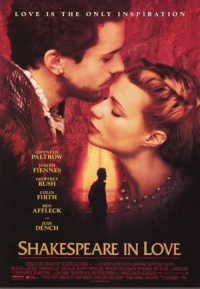
Shakespeare in Love is a 1998 romantic comedy/drama film. The film was directed by John Madden and co-written by playwright Tom Stoppard, whose first major success was with the Shakespeare-influenced play Rosencrantz & Guildenstern Are Dead.
The film is largely fictional, although several of the characters are based on real people. In addition, many of the characters, lines, and plot devices are references to Shakespeare's plays.
Shakespeare in Love won a number of Academy Awards in 1999, including Best Picture, Best Actress (for Gwyneth Paltrow) and Best Supporting Actress (for Judi Dench). It was the first comedy to win the Best Picture award since Annie Hall (1977) and no comedy has won the award since.
The film is largely fictional, although several of the characters are based on real people. In addition, many of the characters, lines, and plot devices are references to Shakespeare's plays.
Shakespeare in Love won a number of Academy Awards in 1999, including Best Picture, Best Actress (for Gwyneth Paltrow) and Best Supporting Actress (for Judi Dench). It was the first comedy to win the Best Picture award since Annie Hall (1977) and no comedy has won the award since.
King Kong

King Kong is a 2005 remake of the 1933 film of the same name about a fictional giant ape called Kong. The film was directed by Peter Jackson and stars Naomi Watts as Ann Darrow, Jack Black as Carl Denham, Adrien Brody as Jack Driscoll and, through performance capture, Andy Serkis as Kong. Serkis also played Lumpy, the galley chef on the SS Venture.
In 1933, Great Depression-era New York City, actress Ann Darrow has just lost her job at the local theatre and is recruited by film director Carl Denham because of the presence of her favourite writer Jack Driscoll. They set sail to a remote Indian Ocean island known as Skull Island, inhabited by prehistoric creatures and the mighty giant gorilla Kong.
The film's budget climbed from an initial $150 million US to a record-breaking $207 million. The film was released on December 14, 2005 and made an opening of $50.1 million. Kong turned out to be very profitable as domestic and worldwide grosses eventually added up to $550 million, becoming the fourth-highest grossing movie in Universal Pictures history. Strong DVD sales also added over $100 million to the grosses. It also received positive reviews, with some considering it one of the all-round best movies of 2005, though it has been criticized for its length at three hours and eight minutes (while a three-disc extended DVD edition actually increases this to over three hours and twenty minutes). It won Academy Awards for visual effects, sound mixing, and sound editing.
In 1933, Great Depression-era New York City, actress Ann Darrow has just lost her job at the local theatre and is recruited by film director Carl Denham because of the presence of her favourite writer Jack Driscoll. They set sail to a remote Indian Ocean island known as Skull Island, inhabited by prehistoric creatures and the mighty giant gorilla Kong.
The film's budget climbed from an initial $150 million US to a record-breaking $207 million. The film was released on December 14, 2005 and made an opening of $50.1 million. Kong turned out to be very profitable as domestic and worldwide grosses eventually added up to $550 million, becoming the fourth-highest grossing movie in Universal Pictures history. Strong DVD sales also added over $100 million to the grosses. It also received positive reviews, with some considering it one of the all-round best movies of 2005, though it has been criticized for its length at three hours and eight minutes (while a three-disc extended DVD edition actually increases this to over three hours and twenty minutes). It won Academy Awards for visual effects, sound mixing, and sound editing.
Charlie and the Chocolate Factory
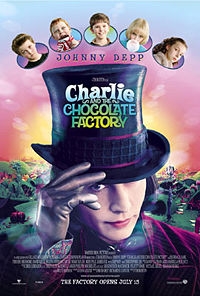
Charlie and the Chocolate Factory is a 2005 film directed by Tim Burton and starring Johnny Depp. Based on the 1964 Roald Dahl children's novel of the same name, the film also stars Freddie Highmore as Charlie Bucket and is the second film adaptation of the book. It is also the second film based on a Roald Dahl novel worked on by Tim Burton. It became a box office success and received positive critical reaction, receiving an Academy Award nomination at the 78th Academy Awards for Best Costume Design. The film was released in North America on July 15, 2005 by Warner Bros. Pictures and Village Roadshow Pictures.
Pans Labyrinth
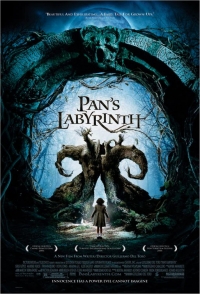
Pan's Labyrinth (Spanish: El laberinto del fauno, literally The Labyrinth of the Faun) is a 2006 Spanish language fantasy film written and directed by Mexican film-maker Guillermo del Toro. It was produced and distributed by the Mexican film company Esperanto Films.
Pan's Labyrinth takes place in Spain in May and June, 1944, after the Spanish Civil War, during the franquist repression. Also present is the main character Ofelia's fantasy world which centers around an overgrown abandoned labyrinth. Ofelia's stepfather, the Falangist Captain Vidal, viciously hunts the Spanish Maquis, guerrillas who fight against the Franco regime in the region, while Ofelia's pregnant mother grows increasingly ill. Ofelia meets several strange and magical creatures who become central to her story, leading her through the trials of the old labyrinth garden. The film employs make-up, puppetry, and CGI effects to create its creatures.
Del Toro stated that he considers the story to be a parable, influenced by fairy tales, and that it addresses and continues themes related to his earlier film The Devil's Backbone, a spiritual sequel, though not an actual sequel. The original Spanish title refers to the mythological fauns of Greek mythology, while the English title refers specifically to the faun-like Greek character Pan (intended to help English-speakers differentiate the title from the term fawn). However, del Toro has stated that the faun in the film is not Pan.
Pan's Labyrinth takes place in Spain in May and June, 1944, after the Spanish Civil War, during the franquist repression. Also present is the main character Ofelia's fantasy world which centers around an overgrown abandoned labyrinth. Ofelia's stepfather, the Falangist Captain Vidal, viciously hunts the Spanish Maquis, guerrillas who fight against the Franco regime in the region, while Ofelia's pregnant mother grows increasingly ill. Ofelia meets several strange and magical creatures who become central to her story, leading her through the trials of the old labyrinth garden. The film employs make-up, puppetry, and CGI effects to create its creatures.
Del Toro stated that he considers the story to be a parable, influenced by fairy tales, and that it addresses and continues themes related to his earlier film The Devil's Backbone, a spiritual sequel, though not an actual sequel. The original Spanish title refers to the mythological fauns of Greek mythology, while the English title refers specifically to the faun-like Greek character Pan (intended to help English-speakers differentiate the title from the term fawn). However, del Toro has stated that the faun in the film is not Pan.
The Hours
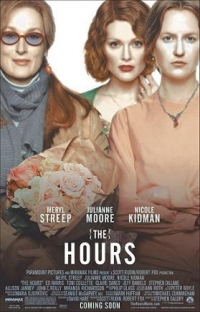
The Hours is a 2002 film about three women of different generations and times whose lives are interconnected by Virginia Woolf's novel, Mrs Dalloway. The film is starring Nicole Kidman, Julianne Moore, Meryl Streep and Ed Harris.
Charlie Brown
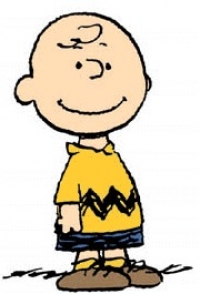
Charles "Charlie" Brown is the main character in the comic strip Peanuts by Charles M. Schulz.
The Phantom of the Opera
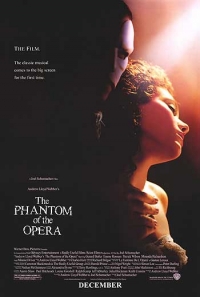
The Phantom of the Opera is a 2004 film adaptation of Andrew Lloyd Webber and Charles Hart's 1986 stage musical, which is based on the novel of the same name by Gaston Leroux. The film was written and directed by Joel Schumacher and Webber and Webber produced the film. The cast includes Gerard Butler as the Phantom, Emmy Rossum (who was only 17 at the time of filming) as Christine Daaé, Patrick Wilson as Raoul, Vicomte de Chagny, Miranda Richardson as Madame Giry, Jennifer Ellison as Meg Giry, and Minnie Driver (whose vocals were dubbed by Margaret Preece, a professional opera singer) as Carlotta Giudicelli. Ramin Karimloo (who had been playing Raoul in the London production of Phantom at the time of filming) appeared in a cameo role as Christine's father.
The film was a USA/UK co-production that had various distributors worldwide. For example, Warner Bros. (a main production partner) distributed the film in the USA, and Universal Pictures (producers and/or distributors of the 1925, 1943, and 1962 adaptations of the book) released the film in Latin America and Australia.
The film was a USA/UK co-production that had various distributors worldwide. For example, Warner Bros. (a main production partner) distributed the film in the USA, and Universal Pictures (producers and/or distributors of the 1925, 1943, and 1962 adaptations of the book) released the film in Latin America and Australia.
Annie

Annie is a 1982 musical film based upon the popular 1977 stage musical of the same name, with music by Charles Strouse, lyrics by Martin Charnin, and the book by Thomas Meehan. It was released in 1982 by Columbia Pictures.
The film version was directed by John Huston, and starred Carol Burnett and Albert Finney. This was Huston's first and only film musical.
The film version was directed by John Huston, and starred Carol Burnett and Albert Finney. This was Huston's first and only film musical.
The Piano
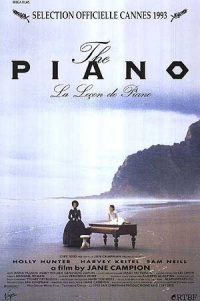
The Piano is a 1993 film about a mute pianist and her daughter, set during the mid-19th century in a rainy, muddy frontier New Zealand backwater. The film was written and directed by Jane Campion, and stars Holly Hunter, Harvey Keitel, Sam Neill and Anna Paquin. It features a score for the piano by Michael Nyman that became a bestselling soundtrack album. Hunter played her own piano pieces for the film, and also served as sign language teacher for Paquin, earning herself three different screen credits. The film was an international co-production by Australian producer Jan Chapman with the French company Ciby 2000.
Alistair Fox has argued that The Piano was significantly influenced by Jane Mander's The Story of a New Zealand River.
Alistair Fox has argued that The Piano was significantly influenced by Jane Mander's The Story of a New Zealand River.
Hannah Montana
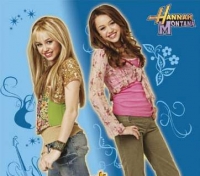
Hannah Montana is an Emmy Award-nominated American television series, which debuted on March 24, 2006 on Disney Channel. The series focuses on a girl who lives a double life as an average teenage school girl named Miley Stewart (played by Miley Cyrus) by day and a famous pop singer named Hannah Montana by night, concealing her real identity from the public, other than her close friends and family.
On April 9, 2008, it was announced that Hannah Montana would return for a third season in 2008 and production started on August 4, 2008.
On April 9, 2008, it was announced that Hannah Montana would return for a third season in 2008 and production started on August 4, 2008.
The English Patient
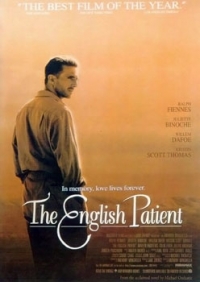
The English Patient is a 1996 film adaptation of the novel by the same name by Michael Ondaatje starring Ralph Fiennes, Kristin Scott Thomas, Willem Dafoe, Juliette Binoche (who won the Academy Award for Best Supporting Actress for her role as "Hana" in this film) and Colin Firth. The film, directed by Anthony Minghella, won nine Academy Awards, including Best Picture. Ondaatje worked closely with the filmmakers to preserve his artistic vision, and stated that he was happy with the film as an adaptation.
Top Gun

Top Gun is a 1986 American film directed by Tony Scott and produced by Don Simpson and Jerry Bruckheimer in association with Paramount Pictures. The screenplay was written by Jim Cash and Jack Epps Jr., and was inspired by an article written by Ehud Yonay for California Magazine entitled "Top Guns." The film stars Tom Cruise, Kelly McGillis, Anthony Edwards, Val Kilmer and Tom Skerritt.
The film follows LT Pete "Maverick" Mitchell, a young Naval aviator who aspires to be a top fighter pilot in the United States Navy Fighter Weapons School, which trains the top 1% of all Naval aviators. Maverick gets his chance to attend the school after one pilot drops out, allowing him and his RIO (Radar Intercept Officer, the "back seater" in the two-man F-14) LTJG Nick "Goose" Bradshaw to train with the best. The film opened in America on May 16, 1986 to good reviews, the aerial scenes being most notably praised. Similar praise followed soon afterwards when the film broke records at the box office, becoming a mega hit. The film accumulated over $350 million world-wide, and broke home-video sales records.
The film follows LT Pete "Maverick" Mitchell, a young Naval aviator who aspires to be a top fighter pilot in the United States Navy Fighter Weapons School, which trains the top 1% of all Naval aviators. Maverick gets his chance to attend the school after one pilot drops out, allowing him and his RIO (Radar Intercept Officer, the "back seater" in the two-man F-14) LTJG Nick "Goose" Bradshaw to train with the best. The film opened in America on May 16, 1986 to good reviews, the aerial scenes being most notably praised. Similar praise followed soon afterwards when the film broke records at the box office, becoming a mega hit. The film accumulated over $350 million world-wide, and broke home-video sales records.
The Addams Family
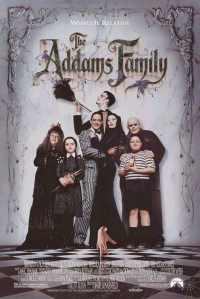
The Addams Family is a 1991 black comedy film based on the characters, from the cartoon of the same name, created by cartoonist Charles Addams, featuring songs and a video from rap artist MC Hammer ("Addams Groove").
The movie was originally developed by Orion Pictures (which at the time owned the rights to the television series on which the movie was based). However, due to the studio's financial problems, Paramount Pictures began co-producing the film and ended up releasing the movie in the U.S., with Orion retaining the international rights (these rights are now owned by Metro-Goldwyn-Mayer through their 1997 purchase of Orion). The 1993 sequel, Addams Family Values, was distributed worldwide by Paramount.
The Addamses are a family of wealthy and eccentric individuals who live together in a Second Empire mansion and share a common interest in the bizarre and the macabre. The characters first appeared in cartoons in The New Yorker magazine in the 1930s, and later gained popularity in the defunct TV series, The Addams Family. The film centers on the day to day life of the family, and the return of Gomez Addams's long-lost brother Fester, played by Christopher Lloyd. The film also stars Raúl Juliá, Anjelica Huston, and Christina Ricci.
The movie was originally developed by Orion Pictures (which at the time owned the rights to the television series on which the movie was based). However, due to the studio's financial problems, Paramount Pictures began co-producing the film and ended up releasing the movie in the U.S., with Orion retaining the international rights (these rights are now owned by Metro-Goldwyn-Mayer through their 1997 purchase of Orion). The 1993 sequel, Addams Family Values, was distributed worldwide by Paramount.
The Addamses are a family of wealthy and eccentric individuals who live together in a Second Empire mansion and share a common interest in the bizarre and the macabre. The characters first appeared in cartoons in The New Yorker magazine in the 1930s, and later gained popularity in the defunct TV series, The Addams Family. The film centers on the day to day life of the family, and the return of Gomez Addams's long-lost brother Fester, played by Christopher Lloyd. The film also stars Raúl Juliá, Anjelica Huston, and Christina Ricci.
Love Story
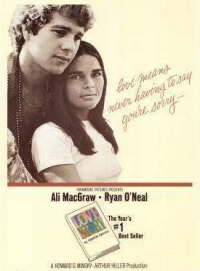
Love Story is a 1970 romantic drama film written by Erich Segal coordinated with his 1970 best-selling novel. It was directed by Arthur Hiller. The film, well-known as a tear-jerking tragedy, is considered one of the most romantic of all time by the American Film Institute (#9 on the list), and was followed by a sequel, Oliver's Story in 1978. Love Story starred Ali MacGraw and Ryan O'Neal and also marked the film debut of a then-unknown Tommy Lee Jones, who played a minor role in the film.
The Fountain
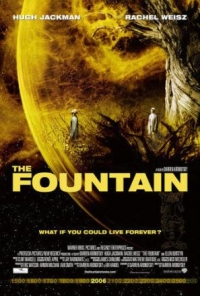
The Fountain is a 2006 American science fiction/fantasy film directed by Darren Aronofsky that follows three interwoven narratives that take place in the age of conquistadors, the modern-day period, and the far future. The film stars Hugh Jackman and Rachel Weisz, whose characters' romance exists in all three time periods. The Fountain explores the themes of love and mortality, drawing influences from the The Fountain of Youth and The Tree of Life. The film is framed with visual language by using transition scenes, light, and shapes.
Originally to be filmed in 2002 on a budget of $70 million with Brad Pitt and Cate Blanchett in the lead, The Fountain shut down production as a result of Pitt's departure. Aronofsky was able to resurrect the project in 2005 with half the budget. The director incorporated visual effects into The Fountain by using minimal computer-generated imagery; he reduced the use of computers by using inexpensive footage provided by a macro-photographer. The Fountain was commercially released in the United States on November 22, 2006, to divided reviews.
Originally to be filmed in 2002 on a budget of $70 million with Brad Pitt and Cate Blanchett in the lead, The Fountain shut down production as a result of Pitt's departure. Aronofsky was able to resurrect the project in 2005 with half the budget. The director incorporated visual effects into The Fountain by using minimal computer-generated imagery; he reduced the use of computers by using inexpensive footage provided by a macro-photographer. The Fountain was commercially released in the United States on November 22, 2006, to divided reviews.
Becoming Jane
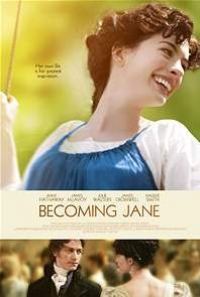
Becoming Jane is a 2007 historical film directed by Julian Jarrold. It is inspired by the early life of author Jane Austen (portrayed by Anne Hathaway), and her posited relationship with Thomas Langlois Lefroy (played by BAFTA-winning Scottish actor James McAvoy). Julie Walters, James Cromwell and Maggie Smith also appear in this picture. The film was produced in cooperation with several companies, including BBC Films and the Irish Film Board. The film performed well at the box office, earning $37 million worldwide according to Box Office Mojo.
The casting was by Gail Stevens and Gillian Reynolds, costumes by Eimer Ni Mhaoldomhnaigh, and original soundtrack composed by Adrian Johnston. Although the film assumes an otherwise unproven relationship between Austen and Lefroy, the original screenplay was inspired by real events, which were chronicled in the book Becoming Jane Austen by Jon Spence, who was the historical consultant on the film. In fact, prior to Spence’s book, biographers Radovici (1995) and Tomalin (2000) have also acknowledged a relationship between Jane Austen and Tom Lefroy. Tomalin’s book was referenced in the making of Becoming Jane.
The casting was by Gail Stevens and Gillian Reynolds, costumes by Eimer Ni Mhaoldomhnaigh, and original soundtrack composed by Adrian Johnston. Although the film assumes an otherwise unproven relationship between Austen and Lefroy, the original screenplay was inspired by real events, which were chronicled in the book Becoming Jane Austen by Jon Spence, who was the historical consultant on the film. In fact, prior to Spence’s book, biographers Radovici (1995) and Tomalin (2000) have also acknowledged a relationship between Jane Austen and Tom Lefroy. Tomalin’s book was referenced in the making of Becoming Jane.
A Walk to Remember
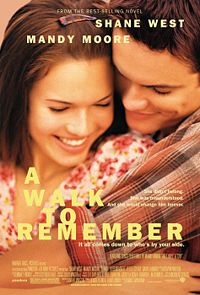
A Walk to Remember is a 2002 romance film based on the 1998 romance novel by Nicholas Sparks. The movie stars pop singer Mandy Moore and Shane West. The movie was directed by Adam Shankman and produced by Denise DiNovi and Hunt Lowry for Warner Bros. Pictures. The novel written by Nicholas Sparks is set in the 1950s while the film is set in present day.
Camp Rock
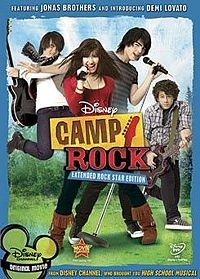
Camp Rock is a 2008 Disney Channel Original Movie (DCOM). The music is written by Julie Brown, Paul Brown, Regina Hicks and Karen Gist. The movie is directed by Matthew Diamond and produced by Alan Sacks.
Anonymous
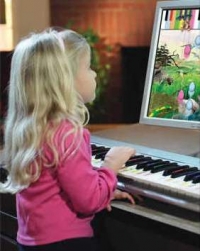
Easy piano sheets to teach kids how to play piano.
Sammy Fain
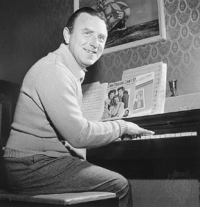
Sammy Fain (Samuel E. Feinberg, June 17, 1902 â December 6, 1989) was an American composer of popular music. He was born in New York City. In 1923, Fain appeared with Artie Dunn in a short film directed by Lee De Forest filmed in DeForest's Phonofilm sound-on-film process. In 1925, Fain left the Fain-Dunn act to devote himself full-time to composing.
Fain worked extensively in collaboration with Irving Kahal. Together they wrote classics such as "Let a Smile Be Your Umbrella". Another lyricist who collaborated with Fain was Lew Brown, with whom he wrote "That Old Feeling". His Broadway credits also include Everybody's Welcome, Right This Way, Hellzapoppin', I'll Be Seeing You, Flahooley, Ankles Aweigh, Christine and Something More.
Fain also composed music for more than 30 films in the 1930s, 40s and 50s. He was nominated for the best Original Song Oscar nine times, winning twice, with "Secret Love" from Calamity Jane in 1954 and with "Love Is a Many-Splendored Thing" from the movie of the same title in 1955. He co-wrote both songs with Paul Francis Webster, another long-time collaborator. Fain wrote the second theme to the TV series Wagon Train in 1958, which was called (Roll Along) Wagon Train. He also contributed to the song scores for the Walt Disney animated films Alice in Wonderland, Peter Pan, and The Rescuers.
In 1963, he collaborated with Harold Adamson in writing songs for the movie The Incredible Mr. Limpet, which came out in 1964, and such songs as "I wish I Were A Fish" "Be Careful How You Wish" and "Deep Rapture" enhanced his fame.
Fain died in Los Angeles, California, and is interred at Cedar Park Cemetery, in Emerson, New Jersey.
Fain worked extensively in collaboration with Irving Kahal. Together they wrote classics such as "Let a Smile Be Your Umbrella". Another lyricist who collaborated with Fain was Lew Brown, with whom he wrote "That Old Feeling". His Broadway credits also include Everybody's Welcome, Right This Way, Hellzapoppin', I'll Be Seeing You, Flahooley, Ankles Aweigh, Christine and Something More.
Fain also composed music for more than 30 films in the 1930s, 40s and 50s. He was nominated for the best Original Song Oscar nine times, winning twice, with "Secret Love" from Calamity Jane in 1954 and with "Love Is a Many-Splendored Thing" from the movie of the same title in 1955. He co-wrote both songs with Paul Francis Webster, another long-time collaborator. Fain wrote the second theme to the TV series Wagon Train in 1958, which was called (Roll Along) Wagon Train. He also contributed to the song scores for the Walt Disney animated films Alice in Wonderland, Peter Pan, and The Rescuers.
In 1963, he collaborated with Harold Adamson in writing songs for the movie The Incredible Mr. Limpet, which came out in 1964, and such songs as "I wish I Were A Fish" "Be Careful How You Wish" and "Deep Rapture" enhanced his fame.
Fain died in Los Angeles, California, and is interred at Cedar Park Cemetery, in Emerson, New Jersey.
James Pierpont
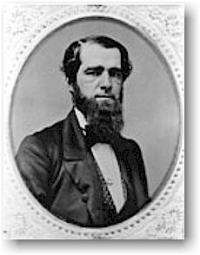
"Jingle Bells", also known as "One Horse Open Sleigh", is one of the best known and commonly sung secular Christmas songs in the world. The song has been translated into many languages. It was written by James Lord Pierpont (1822–1893) and copyrighted under the title 'One Horse Open Sleigh' on September 16, 1857. He was born in Massachusetts, and died in Winter Haven, Florida. He is buried at Laurel Grove Cemetery in Savannah, Georgia. He was inducted into the Songwriters Hall of Fame in 1970.
Wagner
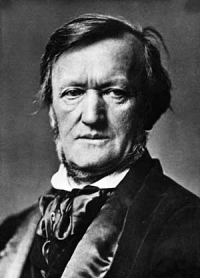
Wilhelm Richard Wagner (22 May 1813, Leipzig, Germany - 13 February 1883, Venice, Italy) was a German composer, conductor, theatre director and essayist, primarily known for his operas (or "music dramas", as they were later called). Unlike most other great opera composers, Wagner wrote both the scenario and libretto for his works.
Wagner's compositions, particularly those of his later period, are notable for contrapuntal texture, rich chromaticism, harmonies and orchestration, and elaborate use of leitmotifs: musical themes associated with particular characters, locales or plot elements. Wagner pioneered advances in musical language, such as extreme chromaticism and quickly shifting tonal centres, which greatly influenced the development of European classical music.
He transformed musical thought through his idea of Gesamtkunstwerk ("total artwork"), the synthesis of all the poetic, visual, musical and dramatic arts, epitomized by his monumental four-opera cycle Der Ring des Nibelungen (1876). To try to stage these works as he imagined them, Wagner built his own opera house.
Wagner's musical style is often considered the epitome of classical music's Romantic period, due to its unprecedented exploration of emotional expression. He introduced new ideas in harmony and musical form, including extreme chromaticism. In Tristan und Isolde, he explored the limits of the traditional tonal system that gave keys and chords their identity, pointing the way to atonality in the 20th century. Some music historians date the beginning of modern classical music to the first notes of Tristan, the so-called Tristan chord.
Wagner's compositions, particularly those of his later period, are notable for contrapuntal texture, rich chromaticism, harmonies and orchestration, and elaborate use of leitmotifs: musical themes associated with particular characters, locales or plot elements. Wagner pioneered advances in musical language, such as extreme chromaticism and quickly shifting tonal centres, which greatly influenced the development of European classical music.
He transformed musical thought through his idea of Gesamtkunstwerk ("total artwork"), the synthesis of all the poetic, visual, musical and dramatic arts, epitomized by his monumental four-opera cycle Der Ring des Nibelungen (1876). To try to stage these works as he imagined them, Wagner built his own opera house.
Wagner's musical style is often considered the epitome of classical music's Romantic period, due to its unprecedented exploration of emotional expression. He introduced new ideas in harmony and musical form, including extreme chromaticism. In Tristan und Isolde, he explored the limits of the traditional tonal system that gave keys and chords their identity, pointing the way to atonality in the 20th century. Some music historians date the beginning of modern classical music to the first notes of Tristan, the so-called Tristan chord.
Alicia Keys

Alicia J. Augello-Cook (born January 25, 1981), and has won numerous awards, including eleven Grammy Awards, seventeen Billboard Music Awards, three American Music Awards.
Her debut album Songs in A Minor was a worldwide success, selling nearly 11 millions albums, and received five Grammy Awards in 2002, with Alicia winning Best New Artist and also Song of the Year for "Fallin'".
Her debut album Songs in A Minor was a worldwide success, selling nearly 11 millions albums, and received five Grammy Awards in 2002, with Alicia winning Best New Artist and also Song of the Year for "Fallin'".
John Legend
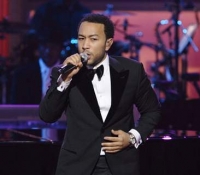
John Stephens (born December 28, 1978) better known by his stage name John Legend, is an American soul singer, songwriter, and pianist. His debut studio album, the multiplatinum-selling Get Lifted, was released in late 2004, and features collaborations with rapper and producer Kanye West as well as Snoop Dogg. Get Lifted produced two singles: "Used to Love U" (US top 100, UK top 30) and "Ordinary People" (US and UK top 30). Legend has won five Grammy Awards. Prior to the release of his debut album, Legend's career gained momentum through a series of successful collaborations with multiple established artists. Notably, Legend sang the hooks for hits by Slum Village ("Selfish", also featuring Kanye West), Jay-Z ("Encore"), and Dilated Peoples ("This Way", also featuring Kanye West); played piano on Lauryn Hill's "Everything is Everything"; and sang background vocals on Alicia Keys' "You Don't Know My Name" and Fort Minor's "High Road."
Moby
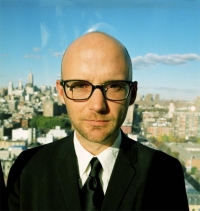
Richard Melville Hall, also known as Moby (born September 11, 1965 in Harlem, New York) is an American DJ, singer-songwriter and musician.
He plays keyboard, guitar, bass guitar and drums. After eight top 40 singles in the UK in the 1990s he released the album Play, in 1999, which sold 9 million copies worldwide. His follow up albums, 18, Hotel, and Last Night sold 6 million copies and have achieved gold and platinum status in over 30 countries.
He plays keyboard, guitar, bass guitar and drums. After eight top 40 singles in the UK in the 1990s he released the album Play, in 1999, which sold 9 million copies worldwide. His follow up albums, 18, Hotel, and Last Night sold 6 million copies and have achieved gold and platinum status in over 30 countries.
John Philip Sousa
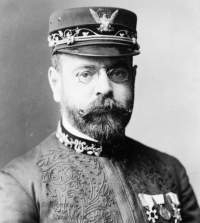
John Philip Sousa (November 6, 1854 – March 6, 1932) was an American composer and conductor of the late Romantic era known particularly for American military and patriotic marches. Because of his mastery of march composition and resultant prominence, he is known as "The March King". In public he was typically referenced by his full name.
Destinys Child
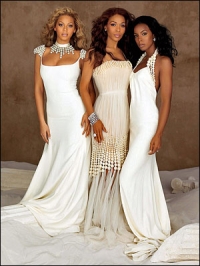
Destiny's Child, sometimes abbreviated as DC or DC3, was an American R&B and pop girl group. Originally a quartet, it eventually became a trio consisting of Beyoncé Knowles, Kelly Rowland, and Michelle Williams. The group released four major studio albums and four US number-one singles. According to the Recording Industry Association of America, Destiny's Child has sold over 17.5 million records in the United States. According to the World Music Awards, they are the world's best-selling female group of all time. Billboard magazine ranked the group as one of the greatest musical trios of all time.
Formed in 1990 in Houston, Texas, Destiny's Child members began their musical endeavors while in their pre-teens. After years of struggling on the road, they signed in to Columbia Records. The release of their breakthrough album, The Writing's On The Wall, launched them to crossover mainstream that established them as a viable artist. While in their commercial peak, the group was plagued by public turmoil involving lawsuits; Williams and Farrah Franklin preempted two members, although the latter parted after months. The strife, however, was believed to only push the remaining members to greater achievements; they recorded their third album, Survivor, which the public interpreted as a channel to the experience. In 2002, Destiny's Child announced a hiatus which involved solo projects; the break allowed them to earn individual success. They re-united to record their final album, Destiny Fulfilled, and retired in 2005 to pursue individual careers in music, theatre, television, and film.
Formed in 1990 in Houston, Texas, Destiny's Child members began their musical endeavors while in their pre-teens. After years of struggling on the road, they signed in to Columbia Records. The release of their breakthrough album, The Writing's On The Wall, launched them to crossover mainstream that established them as a viable artist. While in their commercial peak, the group was plagued by public turmoil involving lawsuits; Williams and Farrah Franklin preempted two members, although the latter parted after months. The strife, however, was believed to only push the remaining members to greater achievements; they recorded their third album, Survivor, which the public interpreted as a channel to the experience. In 2002, Destiny's Child announced a hiatus which involved solo projects; the break allowed them to earn individual success. They re-united to record their final album, Destiny Fulfilled, and retired in 2005 to pursue individual careers in music, theatre, television, and film.
T-Pain
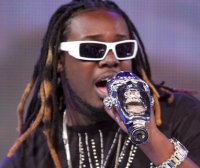
Faheem Rasheed Najm, (born September 30, 1985 in Tallahassee, Florida) better known by his stage name T-Pain, is an American hip hop and R&B singer-songwriter and producer. He has been noted for using autotune.
He was born in to entrepreneur Christian parents, Najib Shasheem and Aliyah Najm, and was brought up Muslim. At the age of ten, Faheem reworked his bedroom into a small studio with a keyboard, beat machine and four-track recorder, and began composing music. Faheem later graduated from James S. Rickards High School in Tallahassee, Florida Prior to becoming a solo singer, Faheem was part of the Tallahassee rap group Nappy Headz (OD, Notty Black, Nook DogG, Doeboy), allowing T-Pain to start his career as a rapper. T-Pain has said in an interview to MSNBC that Akon "called me right when I went to get my application from McDonald’s". After the phone call history was made. In 2002, he founded his own style of musicl, Hard & B, and soon caught the spotlight as a solo artist when his song "I'm Fucked Up", a reworked version of Akon's "Locked Up", gained popularity in the region. Akon noticed the song and signed T-Pain to his newly formed Konvict Music record label.
He was born in to entrepreneur Christian parents, Najib Shasheem and Aliyah Najm, and was brought up Muslim. At the age of ten, Faheem reworked his bedroom into a small studio with a keyboard, beat machine and four-track recorder, and began composing music. Faheem later graduated from James S. Rickards High School in Tallahassee, Florida Prior to becoming a solo singer, Faheem was part of the Tallahassee rap group Nappy Headz (OD, Notty Black, Nook DogG, Doeboy), allowing T-Pain to start his career as a rapper. T-Pain has said in an interview to MSNBC that Akon "called me right when I went to get my application from McDonald’s". After the phone call history was made. In 2002, he founded his own style of musicl, Hard & B, and soon caught the spotlight as a solo artist when his song "I'm Fucked Up", a reworked version of Akon's "Locked Up", gained popularity in the region. Akon noticed the song and signed T-Pain to his newly formed Konvict Music record label.
Scott Joplin
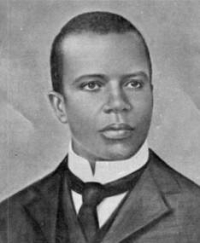
Scott Joplin (between June 1867 and January 1868 – April 1, 1917) was an American musician and composer of ragtime music. He remains the best-known ragtime figure and is regarded as one of the three most important composers of classic ragtime, along with James Scott and Joseph Lamb, and also a precursor to Stride Piano. Decades after his death, his music enjoyed a considerable surge of popularity and critical respect in the 1970s, especially for his most famous composition, "The Entertainer."
Even at the time of publication, Joplin's publisher John Stark was claiming that the rags had obtained classical status, and "lifted ragtime from its low estate and lined it up with Beethoven and Bach".
Even at the time of publication, Joplin's publisher John Stark was claiming that the rags had obtained classical status, and "lifted ragtime from its low estate and lined it up with Beethoven and Bach".
Fort Minor
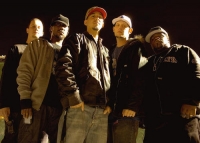
Fort Minor is a hip hop music side project of Mike Shinoda, vocalist of the rock band Linkin Park. Shinoda's first solo album as Fort Minor, The Rising Tied, was released in 2005 with the singles "Where'd You Go" featuring Holly Brook and Jonah Matranga and "Remember the Name". Jay-Z, the hip-hop artist who previously collaborated with Linkin Park on the 2004 album Collision Course, was the executive producer for The Rising Tied. Fort Minor Militia is the official fan club of the project, similar to Linkin Park Underground.
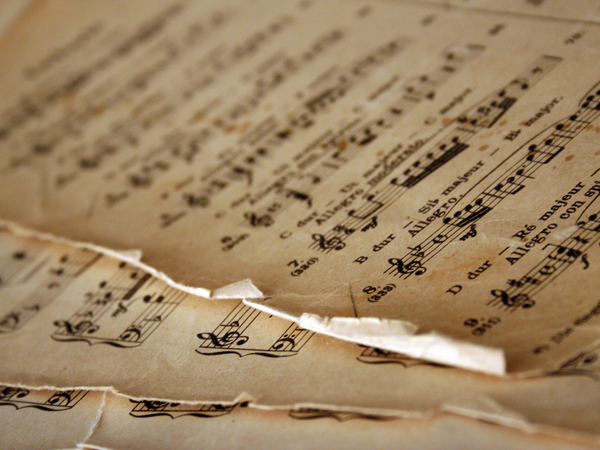 Sheet Music Drive is a web site for those who wants to access popular sheet music easily,
letting them download the sheet music for free for trial purposes.
It's completely free to download and try the listed sheet music, but you have to delete the files after 24 hours of trial period.
Don't forget, if you like the piece of music you have just learned playing,
treat the artist with respect, and go buy the original sheet music.
Sheet Music Drive is a web site for those who wants to access popular sheet music easily,
letting them download the sheet music for free for trial purposes.
It's completely free to download and try the listed sheet music, but you have to delete the files after 24 hours of trial period.
Don't forget, if you like the piece of music you have just learned playing,
treat the artist with respect, and go buy the original sheet music.